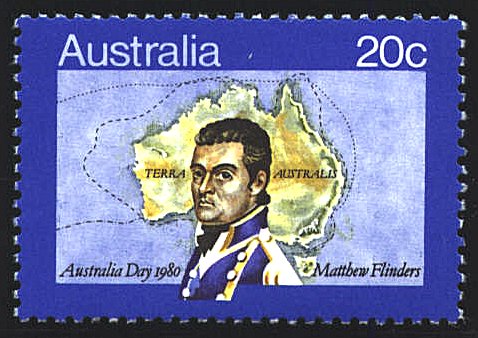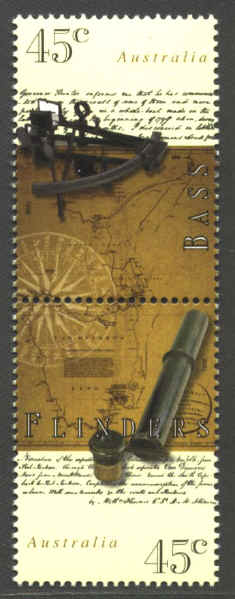|
Matthew Flinders was born in 1774 in Donington, England. In 1789 he
entered the Royal Navy and two years later he served at sea under
William Bligh until 1795. Then as a self-educated navigator, he sailed
to New South Wales in to explore the waters between Australia and Van
Dieman's Land (Tasmania). The circumnavigation and the identification
of Van Diemenís land as an island was accomplished in 1798-1799. The
strait between Australia and Tasmania was named for George Bass
(1771-c. 1803), now known as the Bass Strait. He sailed to England and
in 1801 returned to Australia.
In 1801 Flinders
commanded an expedition to explore the coastline of Australia, during
which he passed through the great barrier reef and surveyed the Gulf
of Carpentaria. In 1803 he circumnavigated Australia. His charts were
very precise and remarkably accurate. After his work, in 1803 he
sailed for England but unfortunately, his ship was wrecked at an
uncharted reef and he returned to Australia in the ship's cutter. On
his homeward journey, Flinders was imprisoned by the French for almost
seven years in Mauritius as a spy. When he was released in 1810, he
returned to England and wrote a book A Voyage to Terras Australis
which was published in 1814. On the same day it was published, he
died.
The
stamp pair shows a map of Australia, Van Diemenís Land and the Bass
Strait.

The
stamp was issued in in 1980 to commemorate Matthew Flindersí
explorations of Australia. The map is based on Flindersí chart of
Terra Australis.

Flinders' charts were
engraved by Arrowsmith and published with his Voyage to Terra
Australis. They "were updated at the direction of the Admiralty to
include results of exploration made by others during the period of
Flinders' imprisonment on Mauritius from 1803 to 1810Ö. Other sources
for the General chart include Cook's charts of part of north
Queensland's coast and Dalrymple's versions of Dutch charts of the
west coast. The General chart shows the track of the Francis
around Van Diemen's Land in 1798, and Investigator, Porpoise, and
Cumberland 1801 to 1803.



|
